The Nordic Hackathon, held on 18-20 March 2025 at the NOD building in Kista, Sweden brought together teams to develop digital solutions for healthcare and social care interoperability using open health data standards. We spoke to Monica Winge, initiator and project manager of the Hackathon to find out more…
What was the Nordic Hackathon about?
The Nordic Hackathon (‘Nordic Hackathon for Interoperability in Coordinated Health and Social Care’) was organised by Stockholm University (Department of Computer and Systems Sciences) and by Karolinska Institutet (LIME) and supported by Health Data Sweden – a European Digital Innovation Hub (EDIH) working to improve access and use of health data in Sweden. As an EDIH, HDS is a national network supporting digital innovations in healthcare, with a focus on interoperability, data management, and AI solutions.
The Hackathon focused on ‘Arne’, a person with multiple health conditions, who regularly visits various care providers. His health data is generated across multiple organisations and systems – sometimes also by Arne himself. Both he and his care providers are frustrated since they face ongoing challenges: Arne’s health data and information about his care activities are trapped in separated system silos and the sharing of data and workflow across organisations is lacking.
The Hackathon goal was to bring together clinical professionals, patient representatives, health authorities and experienced software developers of vendors to look for solutions to these problems. Find solutions to how applications can be designed to share data securely and reliably with relevant actors across Arne’s entire patient journey. Open EHR and HL7 FHIR were chosen as the key open standards to unlock the potential of siloed health data.
What did the preparation process look like?
The preparation for the Hackathon started by recruiting participants in May 2024, following the Vitalis Conference in Gothenburg, where the idea came up as a response to a call for action by many at the conference; “We don’t need any more investigations about patients falling through the cracks. We need action!”.
Series of webinars were organised to learn about the current challenges in treating patients with multiple conditions, the utilisation of open standards, and about the vendors involved.
Training in openEHR, FHIR and Snomed-CT was also arranged to fully prepare the attendees. In addition, training was organised around the capabilities of the open platforms and low-code software development tools available for software developers during the Hackathon itself. There was also a regular Q/A meeting on Fridays to answer any questions or concerns.
Most of the meetings were webinars, but there were also two workshops on-site in Stockholm for team building and face-to-face meetings. The Hackathon process started with a workshop in October 2024 to discuss and to create the design of the hackathon.
How about the Hackathon itself?
There were 97 people involved in the hackathon. The participants formed six teams. Besides software-developers from the vendors, clinical professionals, health authority representatives and subject matter experts in FHIR, openEHR, Snomed CT and more were available for the teams when help was required.
‘openEHR is truly sustainable, as it provides data for life – avoiding expensive and leaky data migration. Applications can change, but access to good quality data is secured through open platforms and openEHR clinical data repositories.’
Hanna Pohjonen, Rosaldo Oy – openEHR Recognised Educator
There were two open platforms made available: Cambio’s and Tietoevry’s platforms. The same vendors also provided low-code tools to use and the teams selected relevant archetypes from the international CKM, built templates and turned them into forms using the low-code toolsets. One group was focusing on pure FHIR-based exchange, using the FHIR server provided by Tietoevry.
There was also a student group from Stockholm University and Karolinska Institutet, working on patient reported PROM data. They made a valuable connection between theory and practical implementation as a part of their informatics studies.
openEHR Finland provided a patient report data template for physiological measurements. This was used for Arne to report his own measurements to the actors involved with Arne’s care.
What were the main results and lessons learnt?
The Hackathon demonstrated that it is possible to share data in a multi-vendor environment and across organisational borders. A future EHR is likely to be a modular ecosystem where applications complement each other and where vendors collaborate to provide functionality. It was great to see competing vendors collaborate and hopefully this Hackathon created partnerships for the future.
‘To see how professionals from different fields came together and after a short time presented potential solutions was an aha experience.’
Maria Lindqvist, HSVN – expert patient needs
The participants were enthusiastic about the multidisciplinary team work and especially the clinical participation and support. Bringing clinicians into the development process is valuable – it increases the chances that new solutions will succeed in real-world use. Present was also a patient representative organization, adding meaningful perspective and keeping the teams focused on the core purpose of the hackathon.
Some of the participants said that the teams could exchange data even if the participants’ knowledge of openEHR by the beginning of hackathon preparations was quite low. It was thus valuable to have several awareness-building sessions throughout the Hackathon journey, helping developers to build new skills.
An important conclusion is that there is a need for a new way of working with these complex issues.
This hackathon focused on patients with multiple illnesses. How did you approach the challenge of enabling better communication and care for this group?
The teams focused on storing all data in the harmonised openEHR format, enabling smooth data sharing and AQL searches across the data. Hopefully it will be possible to initiate new Hackathons in the future and focus also on mapping openEHR and FHIR, so that they could be used seamlessly in the ecosystem.
The task was to start from Arne’s scenario where all involved care units that assessed care needs, planned and carried out care activities would present their activities in a common care plan or dashboard. The goal was to create coherent care for Arne where there was clear responsibility and clarity about who does what.
How important are frameworks like openEHR and HL7 FHIR in building sustainable, scalable solutions across borders?
Structuring and standardizing health data is important to achieve coordinated care regardless of organisation. Standards such as openEHR and FHIR are important in building sustainable, scalable solutions across borders. In the Nordics the aim is to mix and match applications from various vendors on open platforms, and to create federated platforms where various open platforms collaborate and share data. The target is to minimise the utilisation of national extensions and re-use data models from the international CKM as much as possible.
How do you see the new EHDS regulation changing the way companies design for data sharing and integration?
I see EHDS – especially the patient summary – as a platform to start structuring data from a patient perspective. To be able to do that, you have to start looking at data from a different perspective than before. With the hackathon we have the beginning of a first basis for how to think in a new coordinated way when it comes to describing health data for the patient.
‘What truly stood out to me during the Hackathon was seeing how much can be achieved when everyone collaborates and takes action simultaneously toward the same goal. We can come incredibly far with our existing technical solutions.’
Helena Holma, Leyr – CEO/medical doctor
In the future, interoperability will hopefully be built through requirements and design. It should be a natural part of every product or service. EHDS requires a solid foundation of data persistence to support reliable data exchange. It is important to build health data on standards that exchange data in a uniform way.
Finally, what stood out to you most? A moment, a challenge, a collaboration….? What will stay with you from this year’s Nordic Hackathon?
- The opportunities to work together across borders and solve complex health data implementations in order to solve our patient Arne’s problems.
- Seeing the joy and inspiration of many of the participants and the opportunities to solve the problems together.
- Many agreed that this is not something you can solve on your own!
- If you place 97 super-competent developers and experts in the same room for 48 hours, new ways of working, methods and results are created at many different levels.
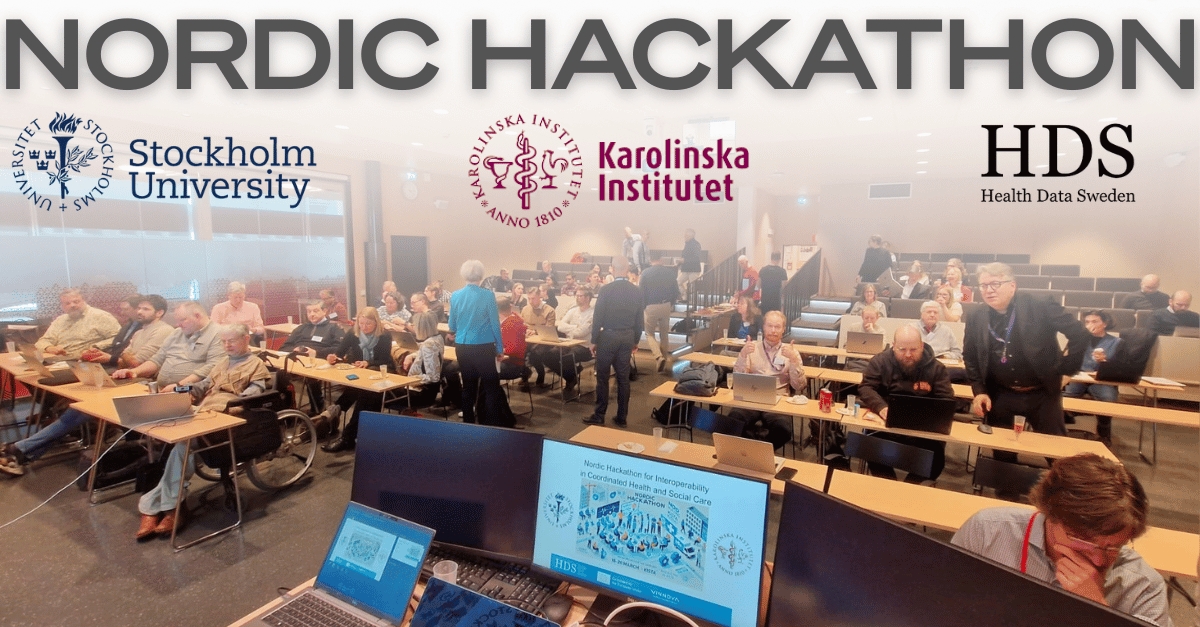
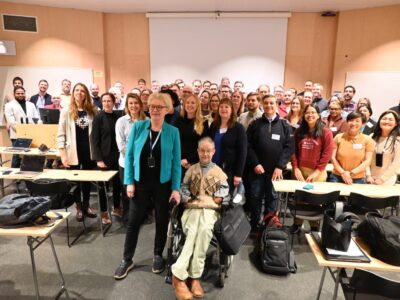
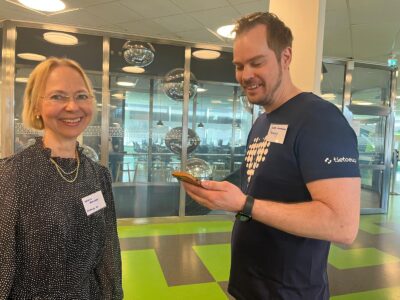
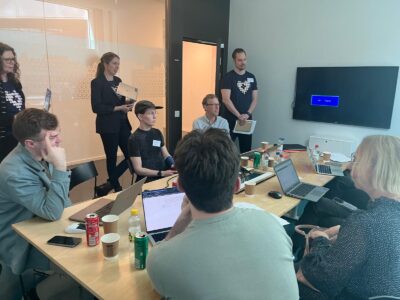
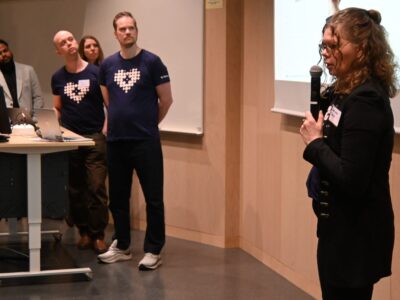
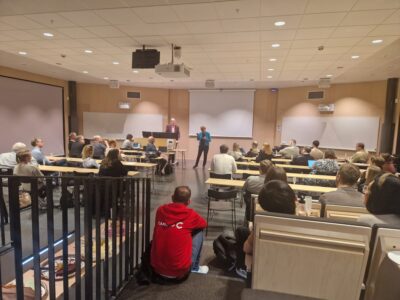
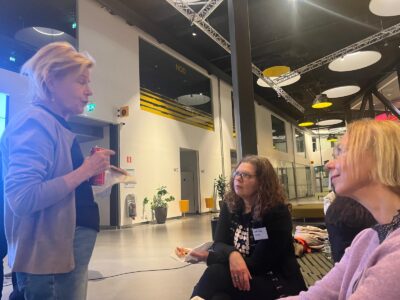
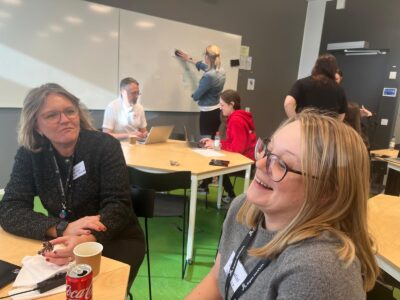
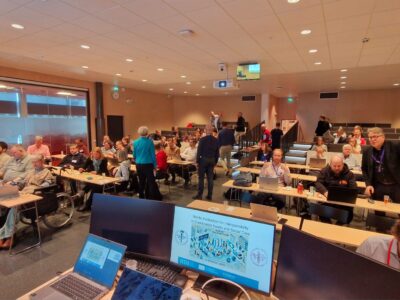
Leave a Reply